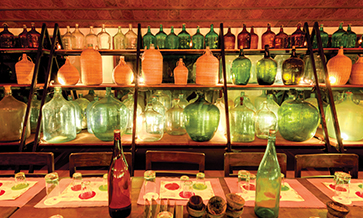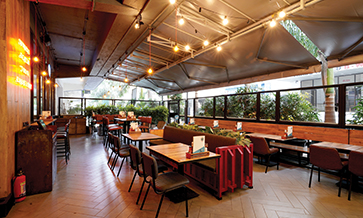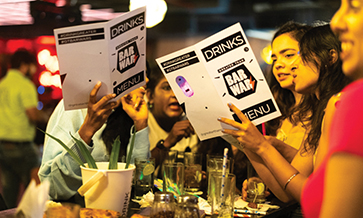Global alcoholic drinks consumption was 250 billion litres in 2021 and has grown at 4.4% in almost all geographies. There has been significant growth for which there are three reasons: the low base, the increase in home consumption, and the gradual recovery of on-trade after the steep decline in 2020.
The recovery was also better and the industry grew at 15%, with beer being the most dominating category. The trend is true for most countries. However, India is different as the overall consumption is dominated by whiskey.
The per capita consumption of beer globally stands at 23 litres, while in India is just 2 litres. This highlights the potential in the market; but it also shows that taxation of beer is making it inaccessible.
In 2021, there were a select few markets with double-digit growth. Two significant markets were India and South Africa. These were also the markets where the government had deemed alcoholic drinks as non-essential and not sold through retail outlets.
Mega trends
The first lockdown resulted in a huge dip and, therefore, the growth in 2021 is also high for these two geographies. What are the mega-trends? These are long-term transformative forces that shape industries, societies and global order. They represent consumer attitudes and behaviour when there is a change.
The way businesses interact with consumers also changes and this gives rise to opportunities as well as challenges. Experts have come up with these eight mega-trends which will shape the future, or at least the next decade.
For the alcobev industry, I would focus on three specific mega-trends. The first is premiumisation, which is the ability to spend more on things that matter while cutting back on things that don’t. This, in alcobev terms, means to drink less but better quality alcohol.
The second is healthy living. The pandemic has put health in the forefront and some smaller categories are finding takers in some of the developed markets.
We all know that there has been a paradigm shift when it comes to consumption. In-home consumption has increased drastically, but there has also been an increase in off-trade consumers willing to experience new products and brands.
If you look at the value and volume breakdown you can see that there was premiumisation and there was polarisation even then. When I talk about polarisation it is the demand gravitating towards the poles. There were middle-income consumers whose incomes were impacted and they downgraded and the economy brands found several takers.
This might not be true in India because when it comes to entry-level consumers downgrade to illicit liquor, but in some developed markets they could not do so as the penetration of illicit is not as high.
When it comes to premiumisation it is fuelled by many reasons. One is a lack of discretionary spending options. In 2020-21, consumers were restricted to homes without outdoor activities and some money went into alcohol.
Craft spirits
Second is the comparative affordability of buying a brand and off-rate vis-a-vis on-trade. In most developed markets there were stimulus packages given to unemployed people and, surprisingly, some of them spent that money on alcohol.
In India also there has been a peak when it comes to premium whiskeys and in most of the premium segments the growth was high in 2021.
Another result of premiumisation and experience is craft. The definition was arrived at after research in more than 100 geographies. When it comes to craft in India, we use three definitions: limited production (under 10 million litres); not being owned by an external business entity; and using innovative or traditional methods.
If you look at penetration across the Asia-Pacific region, you realise that South Korea and Singapore lead the craft penetration, while in India it is as low as 0.5%.
When it comes to defining this particular industry or forecasting it, there are a lot of challenges – for example, if a particular brand exceeds 10 million litres it is then no longer what we call craft. Similarly, if a company gets acquired by a bigger player, it is not considered a craft brand.
There are some trends that are very popular in developed markets and these trends eventually seep through to other territories as well. If you look at the demand for non-alcoholic spirits that has risen, particularly in Europe and North America, the companies who extend these products are targeting two things.
First, they are looking at super-curious events and secondly, they are also targeting dry hospitality venues. So, there has been an uptick in the health and wellness trend that is driving this particular trend.
This trend is also a culmination of the concept of mindful drinking but is not teetotalism. It is a result of people having their own life choices and personal brand curation in the age of social media.
New developments
Another category is ready-to-drink (RTD) products. Again, it’s a flash-link category when it comes to the Indian market, but it has found a lot of takers and was the only category in 2020 that witnessed growth.
Granted that the base is low, but the need for people to replicate on-trade experiences was probably the biggest driver when it comes to this category.
In India also, we have seen a proliferation of cocktail culture, particularly in Tier-1 cities and metros. Therefore, we feel that in future this category will find more takers. Convenience plays an important part and the last year saw several new product developments in this category.
The importance of e-commerce in alcoholic drinks is something to look forward to. After the pandemic, several governments, including state governments in India, allowed e-commerce to maintain social distancing.
One major driver was allowing on-trade e-commerce as well, so you could place an online order for liquor through delivery platforms. This played a very important role in some regions.
However, the global penetration of e-commerce stands only at 3.4%. If we compare it with, say non-alcoholic drinks in India, most major players get their 8 % revenue from e-commerce. So growth potential exists – all we need are regulations that aid the growth of this channel.
Market forecast
I would like to focus on the industry forecast model, where a lot of hard as well as soft drivers are used to understand the forecast of a particular market. We predicted that in 2022 we would reach the 2019 levels globally for all major markets.
In India, we should reach the 2019 levels in 2023. The primary reason being that beer has shown a substantial decline. To make matters worse, the lockdowns coincided with the peak beer season.
When it comes to spirits, we have forecast growth of around 5% over the next 5 years, while beer should be as high as 9%. Though things are looking good we have still not reached 2019 levels.

– The writer was Consultant with the market research company, Euromonitor International. This is an abridged version of the full presentation, which can be accessed in full on the YouTube channel of Brews&Spirits Expo.














